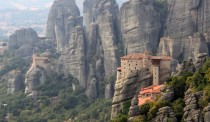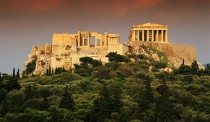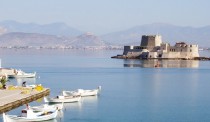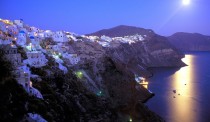
Meteora
The Monasteries of Meteora the trek that will always live within you. Travelers will see where Mother Nature ends and Man Made structures begin. For those who want...read more
Athens
The 5th century BC, under the rule of Pericles, was one of the most glorious periods in Athenian history and laid the foundations of western civilization. It was...read more
Nafplion
Ancient walls, medieval castles, monuments and statues, Ottoman fountains and Venetian or neoclassical buildings mesmerize the visitor with their unique architecture and beauty Click below to go to...read more
Santorini
Santorini is among the top destinations in the world characterized by its Cycladic architecture: white painted villages that stand on the top of the high red-coloured cliffs. Santorini...read more
Course Overview
[dropcap]1[/dropcap] Greece, the cradle of Western Civilization, is also the birthplace of Western Architecture. How did the land, sea, color, and light come together in Greece to give birth to architecture, as we in the West know it? [sm_hr] [dropcap]2[/dropcap] The course answers this question by studying several unique sites in Greece, investigating the role of the topography in defining their architecture, and analyzing the environmental forces of Greek culture and civilization of the surrounding urban fabric that influenced the selection and development of the specific site.[sm_hr] [extra_wrap][dropcap]3[/dropcap]
The student will explore and analyze connections between the underlying geography and location of the site and the significance of the site’s natural elements as they relate to the original architecture and any subsequent man-made structures influencing the site. Focusing on the implications of their research, students will prepare a formal presentation upon their return to school.
[sm_hr] [dropcap]4[/dropcap]Finally each student will present a model of a contemporary structure designed for the historic site, replacing the original structure but taking into consideration the political, social, economic and religious factors that have influenced the site historically.[/extra_wrap] [/span4] [span8]Methodology
A series of precedence studies, research projects, group discussions and travel constitutes the course methods. This is further developed through structured guidance, evaluations, and critiques on the given site locations along with group presentations, discussions, and individual reviews. Readings and discussions provide theoretical direction while individual research allows for practical application for each student-generated project.
Course Description
The Land has Spoken is an odyssey through the majestic land of Greece exploring how historically the site affects the architecture and how the architecture affects the site. The class will explore distinct and unique architectural sites across Greece, discovering the role of the city as a force of culture, civilization and history. These architectural selections have had, and continue to exhibit, political, strategic, social, and religious importance dating as far back as 1,500 B.C.
The class through precedence studies, sketches, documentation, and discussions will unveil the layers of time, discovering for each site its architecture and its surrounding urban fabric in order to answer:
[row_fluid] [span4] [custom_list]- How was the city formed and how did the topography play a role
- How did political, economic, social and cultural issues affect the urban form
- What geographical factors led to the selection of this site
- Under what political, social, and economic conditions was the architecture constructed
- How has site and topography changed over time
- What has been the economic impact of the site on the surrounding
- How do you understand the “essence” of the site
- Who specifically built the structure and what were their motivations
- What is the historical significance of the site-both when constructed and presently
